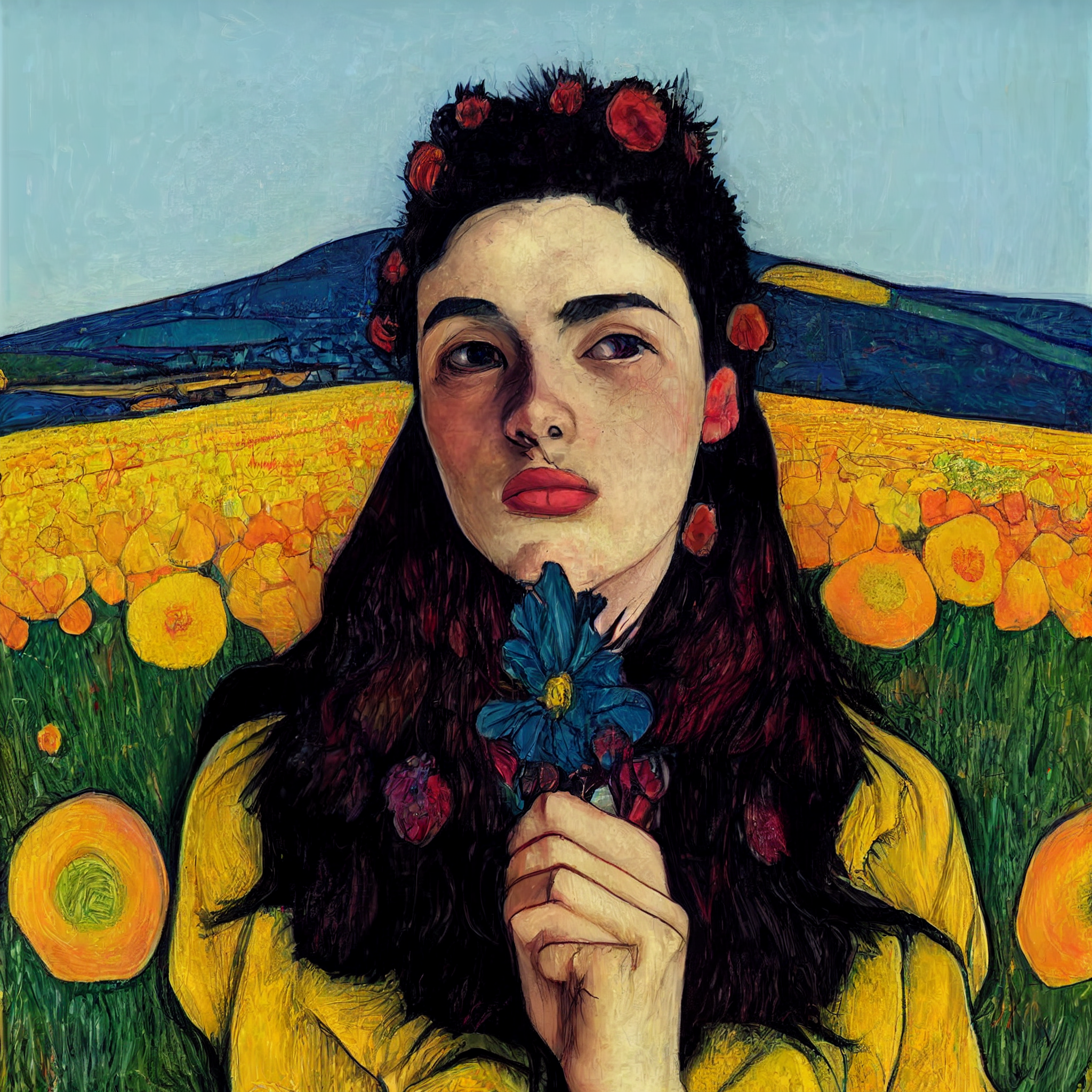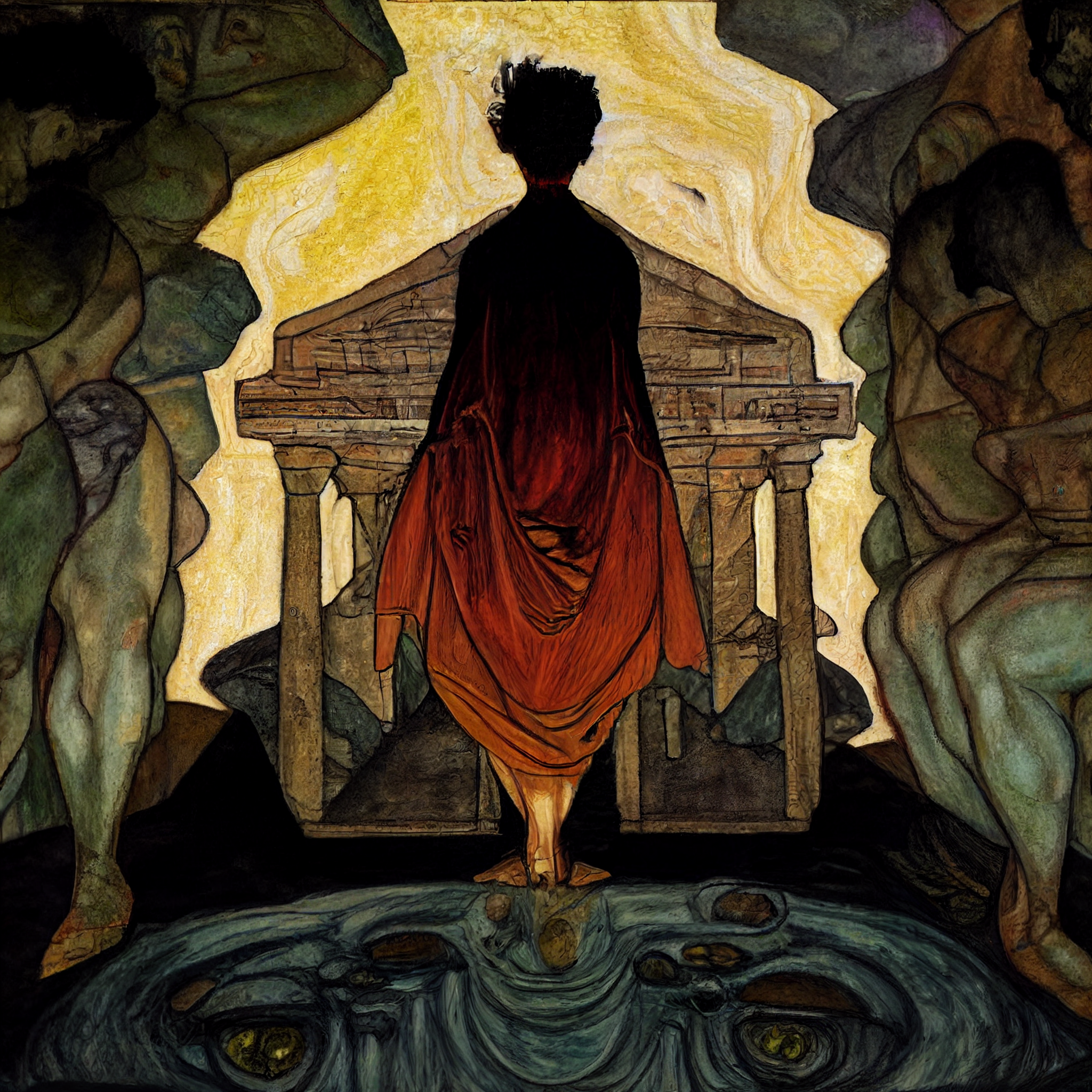The Chthonic Ones

The western idea of a mythological underworld comes mainly from the Greek Eleusinian mystery tradition. Although very little historical evidence remains of the rites of Eleusis because of the secrecy around the practices of the cult, we know that these rituals enacted the transformation of woman from maiden to mother and were at the center of Hellenic ritual life.
The Eleusinian tradition centered on a simple myth: a maiden named Kore is playing in a field of flowers just beyond the gaze of her adoring mother, the fertility goddess Demeter. Without warning the earth opens up and she is swallowed whole, abducted into the underworld by the god Hades, Lord of the underworld. Demeter, after realizing what has happened, goes into mourning and the world falls into perpetual winter. The Gods on Mt. Olympus realize that human beings will starve if spring never arrives, so they send Hermes the messenger god into the underworld to negotiate with Hades. Hades finally agrees to release his beloved Kore, but right before she leaves, he gives her six pomegranate seeds to eat for energy on her journey home. Misinterpreting this as an act of kindness, she eats the seeds and is cursed to return to the underworld every winter for six months. When she returns above ground her mother rejoices and the earth is once again fecund. However, the following year at the Autumn equinox, Kore is summoned to the underworld where she is renamed Persephone and is crowned queen of the underworld. For ancient Greeks the underworld was also the land of the dead, just as human bodies would be placed in the ground to become humus or soil, at the time of death their psyches would enter various realms within the underworld, rather than a celestial heaven as in the Abrahamic traditions. Although this myth served a practical purpose in the ancient world as a way to justify the hardships of winter and also to point to the hopefulness and promise of spring. Fertility rites and possible human sacrifices were employed to ensure a good harvest the following growing season.

Today the underworld is a symbolic place we enter to experience our personal winter, our dark night of the soul, an exile that lasts for as long as it lasts, and then we too emerge into the light of day. In some ways Persephone is the perfect masochistic symbol for the dark age we find ourselves in. She is a quintessential good girl, a passive participant in her own life bartered in exchange for the greater good of humanity. As a mythological figure she never becomes an active creator of her own reality like other expressions of the dark feminine.
The speculative feminist and scientist Donna Haraway has named our current epoch the Chthulucene in her popular book Staying with the Trouble. She defines the Chthonic, as that of or relating to the underworld. By underworld she means both the shadow depths of the human psyche and the tiny imperceptible webs of life that surround us at all times such as; microbes, bacteria, archaea, and viruses. Haraway writes that the speculative temporality of the Chuluthucene contains past, present and future and is tentacular rather than linear in spatiality. She never directly names Persephone, but does discuss other underworld goddesses as inspiration for her concept. The Chuluthucene seems more apt than previous and fairly overused epochal definitions such as the Anthropocene and the Capitalocene.
According to Haraway and others, we can no longer afford to dwell in the Anthropocene, valorizing “Man” and his idiom of “Progress” which is driving technological conquest until the last drop of carbon is extracted from the earth. We must direct our vision downwards rather than upwards. Even the idea of an imminent totalizing apocalypse or civilizational collapse is a very patriarchal concept, a sort of extreme “my way or the highway” ethos that completely excludes the generative qualities and interwoven webs of symbiosis.

The logical mind finds itself descending into the dangerous territory of chaos when it is confronted by the sideways and illogical movements of microbes. If the past two and a half years have proven anything it is that biological life will continue, even if our world as we know it ends. On some days when reading the daily barrage of news of the earth’s forests which seem to be perpetually on fire, the neverending feedback loops of microplastics, poison air and water, I feel like Persephone in the underworld. Perhaps there is power and energy to be found in the dark places we avoid to generate new Chthonic myths for the future.
Juliet is a writer & performance artist based in NYC. More of her work can be found at wildholywisdom.com.
